Zhenjun Dong
Movable Antenna for Wireless Communications:Prototyping and Experimental Results
Aug 16, 2024Abstract:Movable antenna (MA), which can flexibly change the position of antenna in three-dimensional (3D) continuous space, is an emerging technology for achieving full spatial performance gains. In this paper, a prototype of MA communication system with ultra-accurate movement control is presented to verify the performance gain of MA in practical environments. The prototype utilizes the feedback control to ensure that each power measurement is performed after the MA moves to a designated position. The system operates at 3.5 GHz or 27.5 GHz, where the MA moves along a one-dimensional horizontal line with a step size of 0.01{\lambda} and in a two-dimensional square region with a step size of 0.05{\lambda}, respectively, with {\lambda} denoting the signal wavelength. The scenario with mixed line-of-sight (LoS) and non-LoS (NLoS) links is considered. Extensive experimental results are obtained with the designed prototype and compared with the simulation results, which validate the great potential of MA technology in improving wireless communication performance. For example, the maximum variation of measured power reaches over 40 dB and 23 dB at 3.5 GHz and 27.5 GHz, respectively, thanks to the flexible antenna movement. In addition, experimental results indicate that the power gain of MA system relies on the estimated path state information (PSI), including the number of paths, their delays, elevation and azimuth angles of arrival (AoAs), as well as the power ratio of each path.
Prototyping and Experimental Results for Environment-Aware Millimeter Wave Beam Alignment via Channel Knowledge Map
Mar 13, 2024Abstract:Channel knowledge map (CKM), which aims to directly reflect the intrinsic channel properties of the local wireless environment, is a novel technique for achieving environmentaware communication. In this paper, to alleviate the large training overhead in millimeter wave (mmWave) beam alignment, an environment-aware and training-free beam alignment prototype is established based on a typical CKM, termed beam index map (BIM). To this end, a general CKM construction method is first presented, and an indoor BIM is constructed offline to learn the candidate transmit and receive beam index pairs for each grid in the experimental area. Furthermore, based on the location information of the receiver (or the dynamic obstacles) from the ultra-wide band (UWB) positioning system, the established BIM is used to achieve training-free beam alignment by directly providing the beam indexes for the transmitter and receiver. Three typical scenarios are considered in the experiment, including quasi-static environment with line-of-sight (LoS) link, quasistatic environment without LoS link and dynamic environment. Besides, the receiver orientation measured from the gyroscope is also used to help CKM predict more accurate beam indexes. The experiment results show that compared with the benchmark location-based beam alignment strategy, the CKM-based beam alignment strategy can achieve much higher received power, which is close to that achieved by exhaustive beam search, but with significantly reduced training overhead.
A Tutorial on Near-Field XL-MIMO Communications Towards 6G
Oct 17, 2023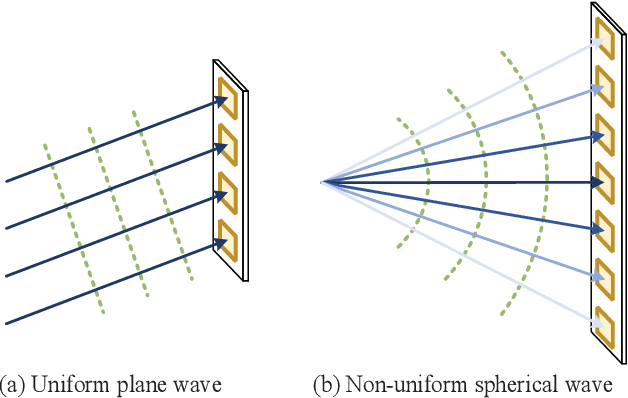
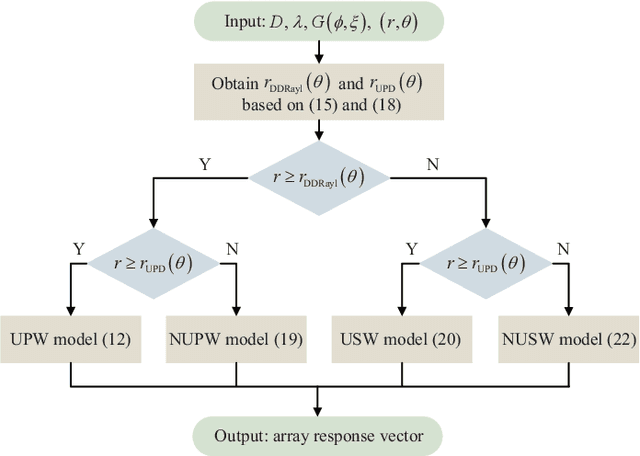
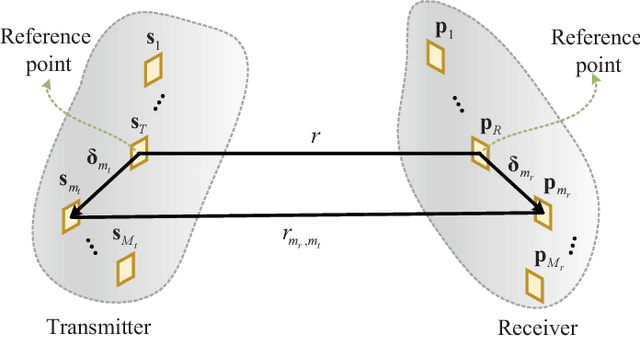
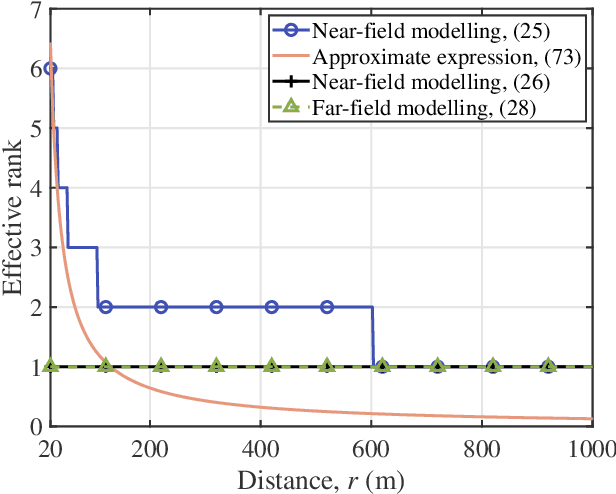
Abstract:Extremely large-scale multiple-input multiple-output (XL-MIMO) is a promising technology for the sixth-generation (6G) mobile communication networks. By significantly boosting the antenna number or size to at least an order of magnitude beyond current massive MIMO systems, XL-MIMO is expected to unprecedentedly enhance the spectral efficiency and spatial resolution for wireless communication. The evolution from massive MIMO to XL-MIMO is not simply an increase in the array size, but faces new design challenges, in terms of near-field channel modelling, performance analysis, channel estimation, and practical implementation. In this article, we give a comprehensive tutorial overview on near-field XL-MIMO communications, aiming to provide useful guidance for tackling the above challenges. First, the basic near-field modelling for XL-MIMO is established, by considering the new characteristics of non-uniform spherical wave (NUSW) and spatial non-stationarity. Next, based on the near-field modelling, the performance analysis of XL-MIMO is presented, including the near-field signal-to-noise ratio (SNR) scaling laws, beam focusing pattern, achievable rate, and degrees-of-freedom (DoF). Furthermore, various XL-MIMO design issues such as near-field beam codebook, beam training, channel estimation, and delay alignment modulation (DAM) transmission are elaborated. Finally, we point out promising directions to inspire future research on near-field XL-MIMO communications.
Multi-User Modular XL-MIMO Communications: Near-Field Beam Focusing Pattern and User Grouping
Aug 23, 2023

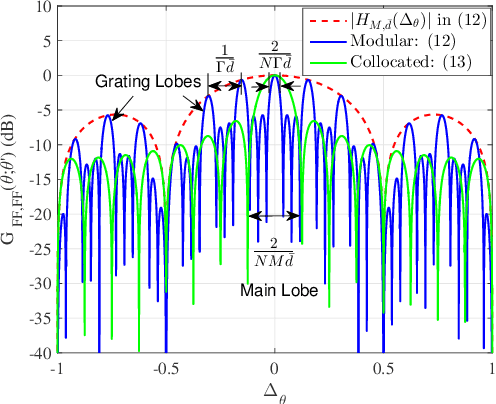

Abstract:In this paper, we investigate multi-user modular extremely large-scale multiple-input multiple-output (XL-MIMO) communication systems, where modular extremely large-scale uniform linear array (XL-ULA) is deployed at the base station (BS) to serve multiple single-antenna users. By exploiting the unique modular array architecture and considering the potential near-field propagation, we develop sub-array based uniform spherical wave (USW) models for distinct versus common angles of arrival/departure (AoAs/AoDs) with respect to different sub-arrays/modules, respectively. Under such USW models, we analyze the beam focusing patterns at the near-field observation location by using near-field beamforming. The analysis reveals that compared to the conventional XL-MIMO with collocated antenna elements, modular XL-MIMO can provide better spatial resolution by benefiting from its larger array aperture. However, it also incurs undesired grating lobes due to the large inter-module separation. Moreover, it is found that for multi-user modular XL-MIMO communications, the achievable signal-to-interference-plus-noise ratio (SINR) for users may be degraded by the grating lobes of the beam focusing pattern. To address this issue, an efficient user grouping method is proposed for multi-user transmission scheduling, so that users located within the grating lobes of each other are not allocated to the same time-frequency resource block (RB) for their communications. Numerical results are presented to verify the effectiveness of the proposed user grouping method, as well as the superior performance of modular XL-MIMO over its collocated counterpart with densely distributed users.
Near-Field Beam Focusing Pattern and Grating Lobe Characterization for Modular XL-Array
May 09, 2023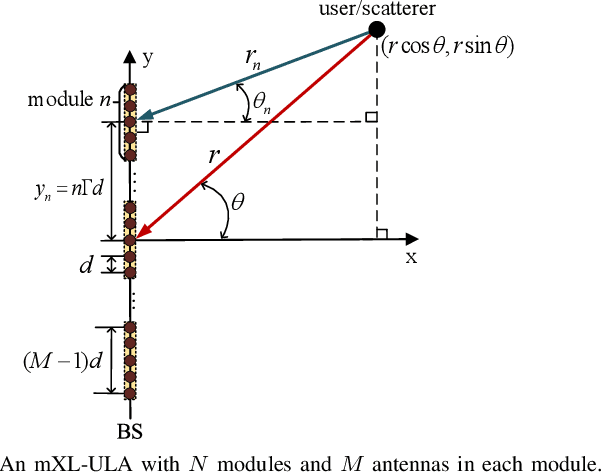
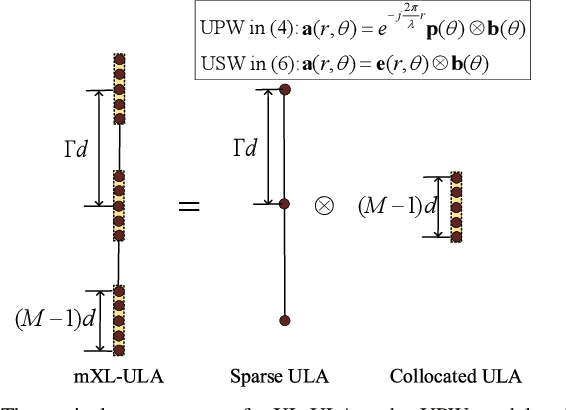
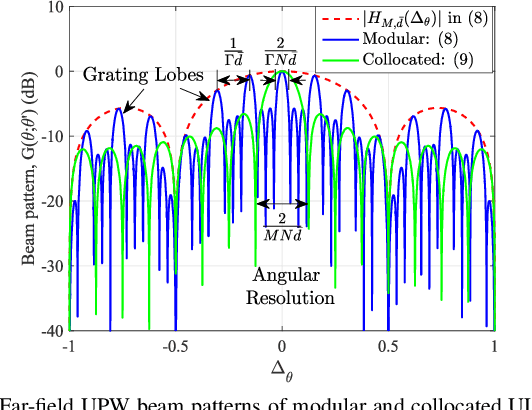
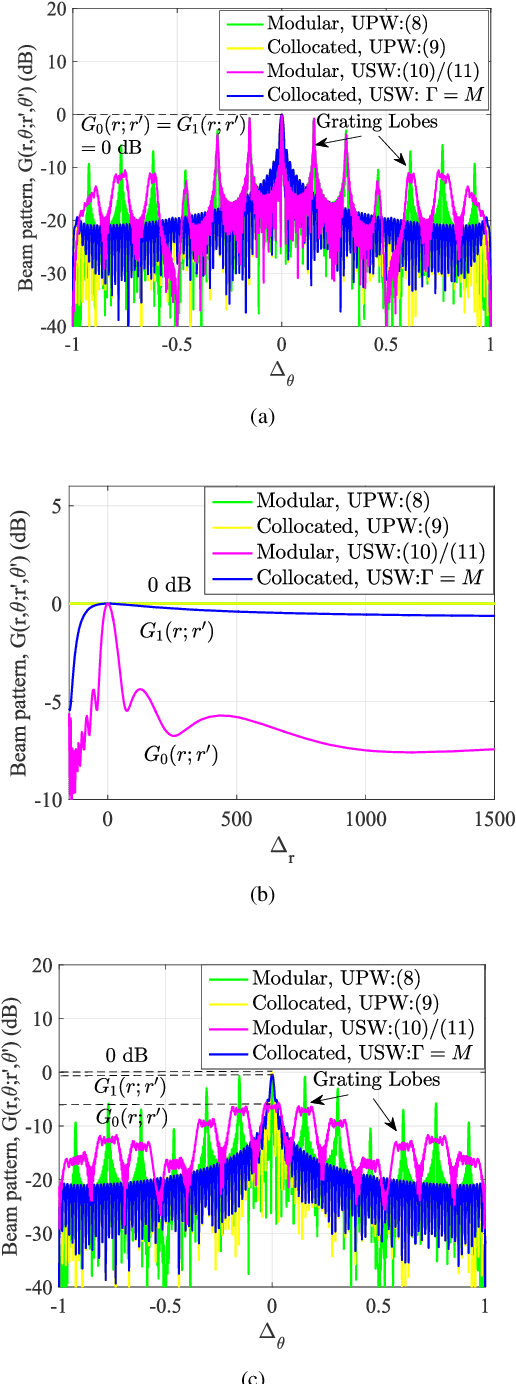
Abstract:In this paper, we investigate the near-field modelling and analyze the beam focusing pattern for modular extremely large-scale array (XL-array) communications. As modular XL-array is physically and electrically large in general, the accurate characterization of amplitude and phase variations across its array elements requires the non-uniform spherical wave (NUSW) model, which, however, is difficult for performance analysis and optimization. To address this issue, we first present two ways to simplify the NUSW model by exploiting the unique regular structure of modular XL-array, termed sub-array based uniform spherical wave (USW) models with different or common angles, respectively. Based on the developed models, the near-field beam focusing patterns of XL-array communications are derived. It is revealed that compared to the existing collocated XL-array with the same number of array elements, modular XL-array can significantly enhance the spatial resolution, but at the cost of generating undesired grating lobes. Fortunately, different from the conventional far-field uniform plane wave (UPW) model, the near-field USW model for modular XL-array exhibits a higher grating lobe suppression capability, thanks to the non-linear phase variations across the array elements. Finally, simulation results are provided to verify the near-field beam focusing pattern and grating lobe characteristics of modular XL-array.
Near-Field Spatial Correlation for Extremely Large-Scale Array Communications
Jan 09, 2022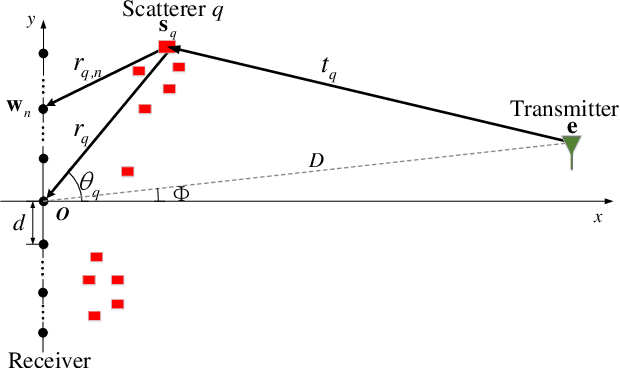
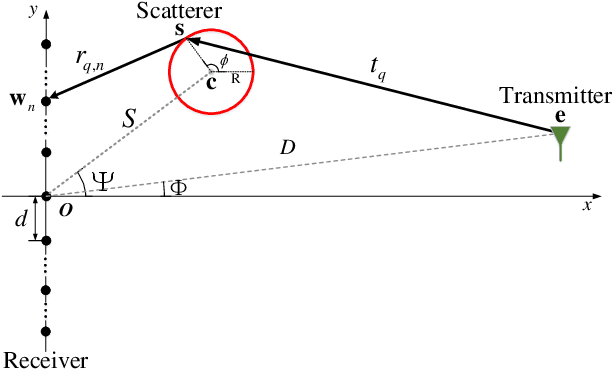
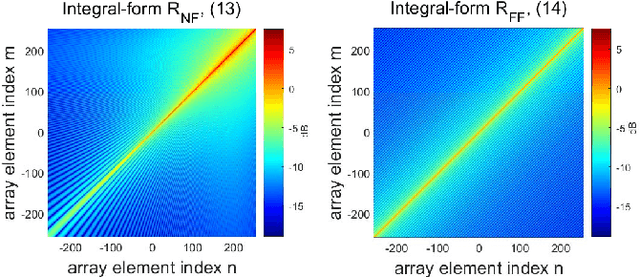
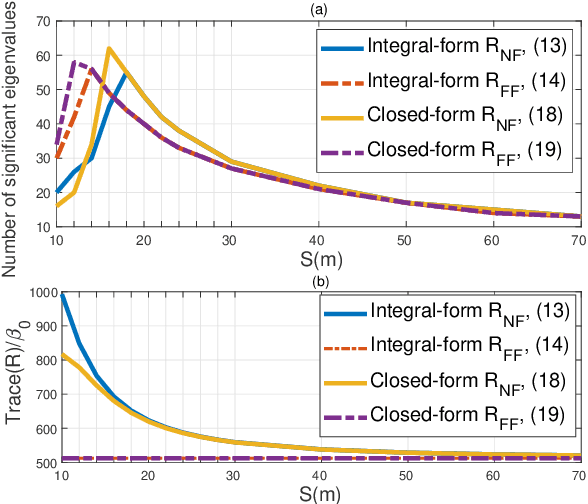
Abstract:Extremely large-scale array (XL-array) communications correspond to systems whose antenna sizes are so large that the scatterers and/or users may no longer be located in the far-field region. By discarding the conventional far-field uniform plane wave (UPW) assumption, this letter studies the near-field spatial correlation of XL-array communications, by taking into account the more generic non-uniform spherical wave (NUSW) characteristics. It is revealed that different from the far-field channel spatial correlation which only depends on the power angular spectrum (PAS), the near-field spatial correlation depends on the scattered power distribution not just characterized by their arriving angles, but also by the scatterers' distances, which is termed as power location spectrum (PLS). A novel integral expression is derived for the near-field spatial correlation in terms of the scatterers' location distribution, which includes the far-field spatial correlation as a special case. The result shows that different from the far-field case, the near-field spatial correlation no longer exhibits spatial stationarity in general, since the correlation coefficient for each pair of antennas depends on their specific positions, rather than their relative distance only. To gain further insights, we propose a generalized one-ring model for scatterer distribution, by allowing the ring center to be flexibly located rather than coinciding with the array center as in the conventional one-ring model. Numerical results are provided to show the necessity of the near-field spatial correlation modelling for XL-array communications.
 Add to Chrome
Add to Chrome Add to Firefox
Add to Firefox Add to Edge
Add to Edge